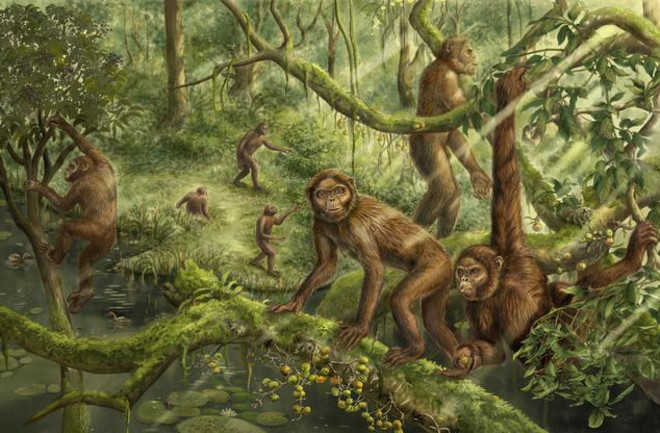When studying how humans evolved to walk on two feet, scientists have focused on comparing bones from the shoulders, pelvis, spine, and limbs of early humans. So how did humans evolve bipedalism?
It turns out, it may have had to do with the inner ears of our ancestors. A new study, published in The Innovation, suspects that the skulls of Lufengpithecus, a primitive ancestor to modern-day orangutans, may hold the key to bipedalism in the structure of their inner ears.
“It is from this broad ancestral locomotor repertoire that human bipedalism evolved,” said Terry Harrison, an anthropologist and study co-author in a statement.
Why Is the Inner Ear Important?
The inner ear holds the vestibular system, which sends information about balance and motion to the brain. It is why we can sense when we are upside down or sideways and where we are in a particular space. The loops inside the inner ear, called semicircular canals, can sense these movements using fluid and hair cells.
“The size and shape of the semicircular canals correlate with how mammals, including apes and humans, move around their environment,” said Yinan Zhang, lead author of the study and Ph.D. student at the Chinese Academy of Science, in a statement.
Read More: An Introduction to the History of Human Evolution
How Did Humans Evolve to Walk?
To see how locomotion evolved and how the inner ear changed over time, researchers took Lufengpithecus skulls found in China in the 1980s and created 3D CT scans of the inner ear. After reconstructing the inner ear, the team compared it to scans of other extinct fossilized apes, modern-day apes, and humans across Asia, Europe, and Africa, and found that walking on two feet evolved in three steps.
First, early apes used their arms to swing through the trees like modern-day gibbons found in Asia do today. Then, the last common ancestor to apes and humans started using their limbs to hang from trees, stood on their two feet while hanging from trees, and walked on all fours while on the ground, explained Harrison.
“Most fossil apes and their inferred ancestors are intermediate in locomotor mode between gibbons and African apes,” said Xijun Ni, study author and vertebrae paleontologist at the Chinese Academy of Sciences, in a statement. “Later, the human lineage diverged from the great apes with the acquisition of bipedalism, as seen in Australopithecus, an early human relative from Africa.”
Read More: Chimpanzees Could Answer Why Humans Evolved to Walk Upright
Climate Aiding Evolution
The team suspects climate change may have further led to the evolving movement in apes and humans.
“Cooler global temperatures, associated with the build-up of glacial ice sheets in the northern hemisphere approximately 3.2 million years ago, correspond with an uptick in the rate of change of the bony labyrinth, and this may signal a rapid increase in the pace of ape and human locomotor evolution,” said Harrison in a statement.
Other studies found that environmental changes could have led to evolution because limited resources or changes in habitat may have forced early hominoids to move to more suitable climates or learn other ways to obtain food.
Read More: Humans Evolved From A Common Ancestor That Appeared 6 Million Years Ago
Article Sources
Our writers at Discovermagazine.com use peer-reviewed studies and high quality sources for our articles, and our editors review for accuracy, and trustworthiness. Review the sources used below for this article:
The Innovation. Lufengpithecus inner ear provides evidence of a common locomotor repertoire ancestral to human bipedalism.
National Library of Medicine. Palaeobotanical evidence reveals the living conditions of Miocene Lufengpithecus in East Asia.
Read More: Sahelanthropus Was The First Hominin To Walk On 2 Feet

